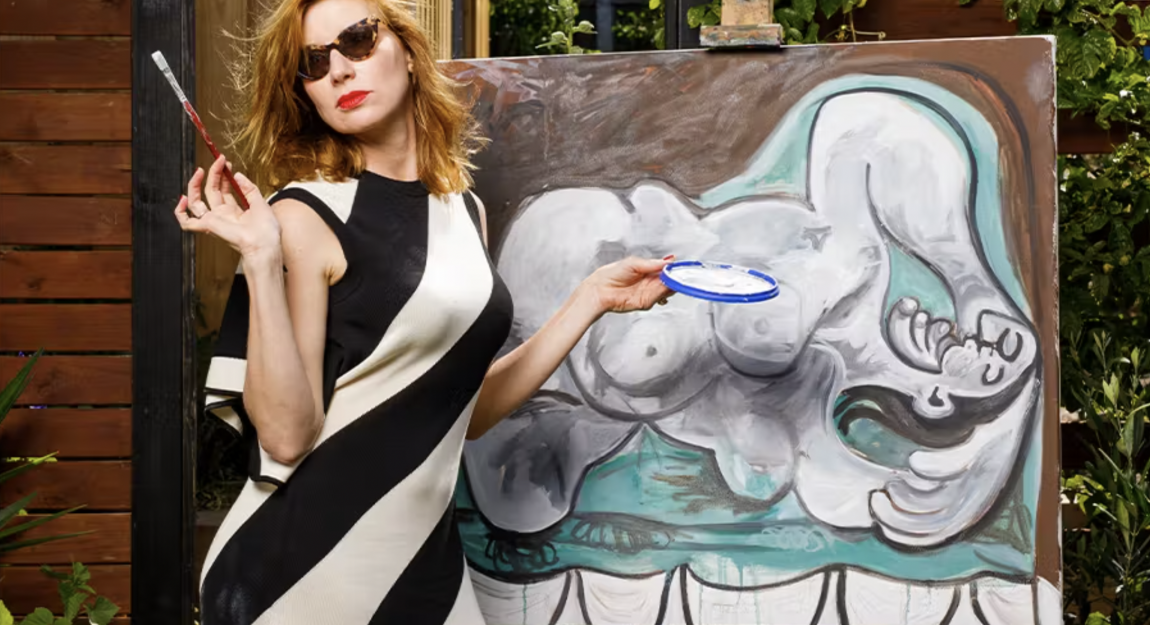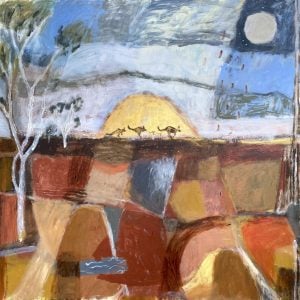The Mona Fraud Scandal Shines a Light on the Importance of Human Originality
As questions around creativity, originality and what it means to be human swirl in the melting pot of generative AI and increasingly clever tech, the value of human-made art and human artists is under intense scrutiny. In most creative fields, we hear there’s no such thing as a completely original idea.
Every artist in any medium is standing on the shoulders of the great artists who came before them, inspired by the art they have consumed, studied and revered – either consciously or unconsciously. And right now, technology is blurring the lines of what’s original, what constitutes art, and who can stake a claim on owning art and ideas, even further.
Liar or Genius?
Mona’s provocative recent stunt, revealing that the Picassos featured in its Ladies Lounge installation and then subsequently in its ladies’ bathrooms were actually forgeries, has brought the question of art and originality into the national conversation.
The debate has so far been about whether Kirsha Kaechele’s forgery an act of unforgivable dishonesty, or a genius act of performance art. Kaechele’s work wasn’t ‘original’ but it was art created by her human hand, and despite what some may say, I believe there is considerable value in that, especially in an increasingly technologically driven world.
Some say her crime is in deceiving the public into thinking they were in the presence of original pieces by one of the world’s greatest artists – but surely even those who were duped can appreciate Mona’s approach is never going to conform to the unwritten rules of the art establishment. Fraud has existed in the art world for as long as art has been something bought, sold and traded.
Thinking Different(ly)
What is art if it doesn’t challenge us to think differently, appreciate different perspectives, or surprise us with a break from the mundanity of modern life? Where does originality in art start and end? Can we appreciate the skill of recreating a masterpiece to a quality making it almost impossible to discern from the original?
While many claim Kaechele’s work is attention-seeking or dishonest, others can appreciate the genius in creating something that thousands appreciated unquestioningly. Surely we can’t diminish the experience of every Mona visitor who felt something in the presence of her artistry, or contemplated the meaning of the pieces?
Her work remains a political statement which holds value, fraud or not. Her act has created a healthy debate about what constitutes original art and what we see as valuable. Rather than only appreciating art with legitimate pedigree, human art and human originality can come in many forms.
Why Originality Matters
As technology evolves and becomes more sophisticated in the ‘art’ it can reproduce and create from a series of prompts or inputs, the idea of originality is an important one to consider. Anyone can walk into a department store and buy a print of a famous painting, but any piece created by a human hand will always contain something valuable, beyond what can be replicated.
This isn’t to say technology can’t augment art and be a tool for originality, but that we should approach any finite definition of art with caution. Art and what we consider art will continue to evolve. Who are we to tell people what they can and can’t enjoy in the world of art? Art in its very essence is subjective – no two people will appreciate the same piece in the same way.
The Human Element
So rather than bringing our pitchforks to the witch hunt of an artist who is truly pushing the boundaries of performance art and our understanding of human originality, can we instead use this moment to think about what we’re willing to accept and tolerate if we want art to evolve and remain a human outlet of expression?
At its heart, art is about original and authentic ideas and Kaechele’s idea was indeed original and unique in its actualisation. Whether you see her as an artist, an activist or a fraudster, there is no denying she has shaken us all out of complacency in appreciating the human element of art.
As the co-founder of Australia’s largest online marketplace for original art, I for one am grateful to Kaechele for shining a light on why originality in art matters, and why every human artist producing original work deserves to be acknowledged, celebrated and rewarded. We need to ask questions about the art we’re supporting, as well as notice and advocate for the artists creating original work and building their livelihood from creativity. An AI algorithm can only use the data it has – it can’t decipher the human heart, or speak to the human experience. It could not have done what Kaechelle did.
Human creativity is also more than just the sum of our influences. Surely none of us is ready to give up on the storytelling, emotive beauty or confronting controversy of truly original human-made art?











